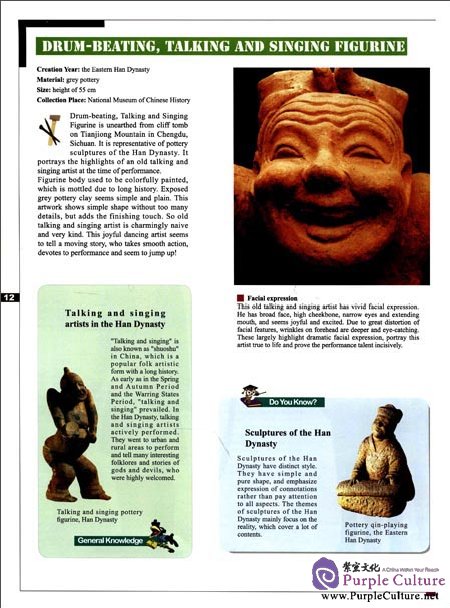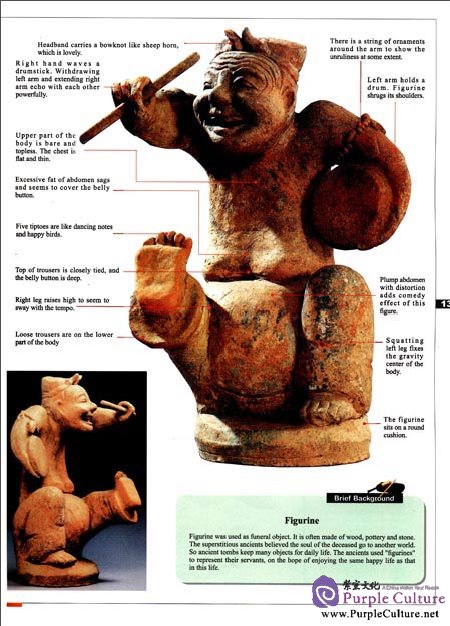Sample Pages Preview


This stone carving is a part of coffin chamber, which is lower pedestal of a stone column. It is unearthed from ancient tomb in Shijiazhai Village,and its owner is Sima Jinlong,Zhenxi General in the Northern Wei Dynasty.
Stone Plinth of Tomb of Sima Jinlong consists of three layers from top to bottom. The base is square, with honeysuckle and intertwining lotus pattern cut in relief at four sides. Every unit design sees a dancing child with different actions,which is changing and uniform. The middle layersees high relief of dragon crossing the sea, which is surrounded by dancers with different postures.The top layer sees a blooming lotus. This artwork boasts brilliant shape, and makes clever use of round carving, openwork carving, line engraving and other carving techniques.
Round carving, openwork carving and line engraving are all carving techniques.
Round carving refers to carving at all aspects and all parts so that artworks have no background to be appreciated from various angles.
Openwork carving refers to engraving relief board hollow so that backside scenery can be seen from openwork place through obverse side of artworks.
Line engraving refers to outlining the scenery with brush on the material, and then engraving concavoconvex lines along the ink with sharp knife instead of brush.
The Wei and Jin Dynasties and the Northern and Southern Dynasties witnessed the golden age of traditional sculptures. Due to interactions between various ethnic groups, sculpture style diversified in this period. Buddhismthemed artworks dominated in terms of quantity. As for the creation, "charm" was highlighted, while drawing and realism were reinforced.
Building sculptures refer to local decorations or building components which are used to beautify main parts of buildings,Round carving, openwork carving, line engraving and other carving techniques are often adopted on the building surface so as to create a variety of art images.
Ancient building sculptures form respective systems and show strong ethnic features.They are widely used in screen wall facing the gate of a house, marble pillar, plinth,architrave, caisson, tile, etc.
Bodhisattva Statue of Qingzhou is one of preserved statues of Longxing Temple,Qingzhou, Shandong. As a masterpiece of the Wei and Jin Dynasties and the Northern and Southern Dynasties, it marks the highest achievement of Buddha statue at that time.
The hands and legs of Bodhisattva statue are missing, but the statue is still beautiful. Bodhisattva features clear facial features, slight smile,slender body and elegant posture.She wears a crown with drooping strip. She wears a long skirt and short embroidered cape on shoulder. She is covered by luxurious and refined pendants, with well-proportioned image. With saint, elegant, implicit and ordinary features, the statue is not only resplendent with jewels, but also presents plain and pure temperament.
In recent years, in the cellar of Longxing Temple Site in Qingzhou, Shandong, a total of 2,000 preserved Buddha statues and statue steles are found. They boast high artistic level and good preservation conditions. They can date back from the Northern Wei Dynasty to the Song Dynasty,and most ofthem are treasures of the Northem Wei Dynasty and the Northern Qi Dynasty.They are made of limestone,granite, marble, cast iron,pottery, clay, wood, etc.

